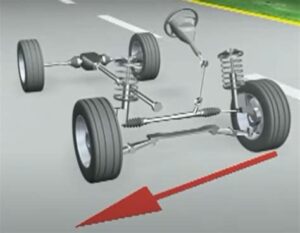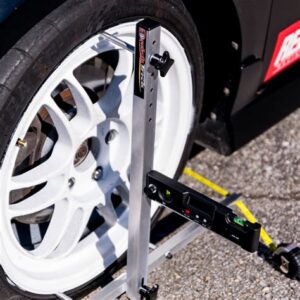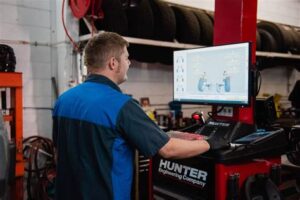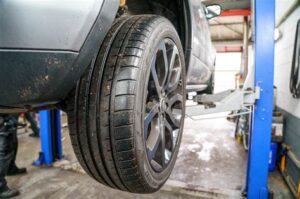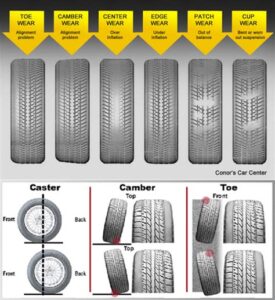Explore the significance of audio time alignment, methods to achieve it, and essential tips to enhance your audio quality for optimal results.When it comes to achieving the ultimate audio experience in your vehicle, time alignment is a crucial concept that can elevate your sound to new heights. Understanding how sound travels and ensuring that audio signals reach your ears simultaneously can transform your listening experience, making it more immersive and enjoyable. In this blog post, we will explore the essentials of time alignment in car audio, delving into its significance, various methods for achieving it, and the notable benefits it brings to your sound system. Whether you’re a seasoned audiophile or simply looking to enhance your daily drive, our tips will guide you on the journey to perfecting audio time alignment in your car. Buckle up as we navigate through the fascinating world of car audio optimization!
Understanding Time Alignment
Time alignment in car audio refers to the process of synchronizing the arrival times of sounds from different speakers to create a cohesive audio experience. When audio signals from various speakers reach the listener’s ears at different times, it can lead to a disjointed soundstage, reducing the overall listening experience. Effective time alignment ensures that all audio components work together harmoniously, enhancing clarity and depth.
Different speakers in a car audio system may be at varying distances from the listener, causing delays in sound waves’ arrival. For instance, if the front speakers are closer to the listener than the rear speakers, the sound from the rear will reach the listener later, resulting in a less integrated sound. By employing time alignment techniques, whether through digital signal processing or manual adjustments, the audio can be managed so that all signals reach the listener simultaneously, creating a more immersive sound.
In summary, understanding time alignment is crucial for car audio enthusiasts who aspire to achieve an optimal listening experience. This involves not only technical knowledge of speaker placement and system capabilities but also an appreciation for how time-related delays impact overall sound quality.
Importance of Aligning Audio Time
Time alignment is a crucial aspect of achieving optimal sound quality in car audio systems. The positioning of speakers and the timing of audio signals play a significant role in how sound is perceived by the listener. When audio signals from different speakers reach the listener’s ears at varying times, it can lead to a phenomenon known as phase cancellation, resulting in a diminished auditory experience.
By ensuring that each speaker delivers its sound wave at the correct time, you can create a more cohesive and immersive listening environment. This synchronization enhances clarity, depth, and the overall impact of the audio. For example, if the bass speaker delivers its sound later than the mid-range or treble speakers, the fullness of the bass can be lost, leading to a less impactful sound. Proper time alignment helps mitigate this issue, providing a balanced and rich auditory experience.
Investing time and effort into audio time alignment not only improves sound quality but also enhances the listener’s connection to the music. It allows for a more lifelike reproduction of audio, making the experience enjoyable for everyone in the vehicle. Whether you are an audiophile or simply enjoy your music, understanding the importance of aligning audio time will undoubtedly elevate your car audio experience.
Methods for Time Alignment
Time alignment in car audio systems is crucial for achieving the best sound quality possible. There are several methods to ensure that the sound from each speaker reaches your ears at the same time, creating a more cohesive listening experience. Below, we explore the most effective methods for achieving proper time alignment.
1. DSP (Digital Signal Processor): One of the most advanced methods for time alignment is using a Digital Signal Processor. DSPs allow you to adjust the timing of each speaker individually, ensuring that sound waves are synchronized. This method provides the highest level of precision and is commonly used in professional audio settings.
2. Manual Delay Adjustment: Many modern car audio systems come equipped with manual delay adjustments. This feature lets you calculate the distance between each speaker and your listening position, allowing you to adjust the delay for each speaker. By setting the delay based on the distance, you can ensure that all sounds arrive at the listener’s position simultaneously.
3. Phase Adjustment: Adjusting the phase of your speakers can also aid in time alignment. By changing the phase of signals sent to specific speakers, you can enhance the coherence of the sound waves arriving at your ears. This can be especially beneficial for subwoofers, which often require careful phase alignment with other speakers in the system.
4. Speaker Positioning: While it may seem basic, the positioning of your speakers plays a significant role in time alignment. Ensuring that speakers are mounted in optimal locations within your vehicle can help in naturally aligning sound. For instance, aiming speakers towards the listener and mounting them at an appropriate height can drastically improve sound cohesion.
By employing these methods for time alignment, you can significantly enhance the audio experience in your car. Each method has its own merits, and often a combination of techniques will yield the best results.
Benefits of Time Alignment
Time alignment in car audio systems is a crucial factor that can significantly enhance your listening experience. By ensuring that all audio signals reach your ears at the same time, you can enjoy a more coherent sound stage and improved audio fidelity. Here are some of the key benefits of properly aligning your car audio system.
One major benefit of time alignment is the enhancement of sound imaging. When each speaker in your car audio system is calibrated for timing, the music can create a more immersive experience. With accurate synchronization, musicians and instruments can appear to be positioned in the space around you, bringing your favorite tracks to life.
Another benefit is the reduction of phase issues. When sounds arrive at different times from multiple speakers, it can lead to phase cancellation, which diminishes the clarity and impact of your music. Time alignment helps mitigate this, allowing for a more balanced sound across all frequencies. Ultimately, this leads to a more enjoyable and powerful audio experience, making your car rides more pleasurable.
Lastly, time alignment allows for customization of the sound system based on personal preferences. With the ability to adjust the timing of each speaker, users can tailor the listening environment to suit their taste. This level of personalization can make all the difference, elevating not just the quality of your audio, but also your enjoyment of it.
Tips for Achieving Proper Time Alignment
Achieving proper time alignment in car audio is essential for ensuring the best sound quality and listening experience. Here are some effective tips that can help you align audio time accurately in your vehicle:
- Understand Your Audio System: Before adjusting anything, familiarize yourself with your car’s audio components, including speakers, amplifiers, and processors. Knowing their specifications will help in making informed adjustments.
- Utilize a Digital Time Alignment Processor: Many modern audio systems come equipped with built-in digital signal processors (DSPs) that facilitate easy time alignment adjustments. Invest in one if your current system lacks this feature.
- Measure Distances: Use a measuring tape to determine the distance from each speaker to your listening position. This will help in adjusting the delay settings accurately based on these measurements.
- Use Calibration Tools: Invest in sound measurement tools or smartphone applications designed for audio testing. These can assist in making precise measurements and adjustments.
- Fine-Tune Listening Position: Your listening position will significantly impact the sound experience. Experiment by adjusting your seating position or the configuration of your speakers to achieve optimal sound.
- A/B Testing: Make small adjustments and listen in between changes. This will allow you to evaluate the effects of your changes on sound quality and to achieve the desired sound stage.
By applying these tips, you can effectively achieve proper time alignment in your car audio system. Remember that patience and experimentation are key to mastering the alignment process.
In summary, taking the time to understand your audio system, utilizing the right tools, and testing variations can yield commendable results in your car’s sound quality.
Happy listening, and may your tunes always be in perfect harmony!
Frequently Asked Questions
What is time alignment in car audio?
Time alignment in car audio refers to the process of adjusting the audio signals so that sounds from different speakers reach the listener’s ears at the same time, improving clarity and creating a more immersive listening experience.
Why is time alignment important in car audio systems?
Time alignment is crucial because it minimizes phase issues and echoes that can distort sound quality. By ensuring that all speakers are synchronized, it helps create a coherent soundstage, enhancing the overall audio experience.
What are the common methods to achieve time alignment?
Common methods for achieving time alignment include using digital signal processors (DSPs), adjusting speaker placement, and utilizing delay settings in audio processors to fine-tune the timing of sound signals.
Can I manually adjust time alignment in my car audio system?
Yes, if your car audio system includes a DSP or other advanced features, you can manually adjust the time alignment settings based on your listening position, though it may require some technical knowledge and patience.
What tools do I need for time alignment in car audio?
To achieve effective time alignment, you may need a sound level meter, a time alignment software or DSP, and possibly an acoustic measurement microphone to analyze the audio response within your vehicle.
What are the signs that my car audio system needs time alignment?
Signs that your car audio may need time alignment include a lack of clarity in vocals, an unbalanced soundstage, and sounds that seem to come from different directions rather than from a cohesive point.
Does the size and shape of my car affect time alignment?
Yes, the size and shape of your car can significantly affect how sound waves travel and interact within the space, making it essential to consider these factors when setting up time alignment for optimal performance.
